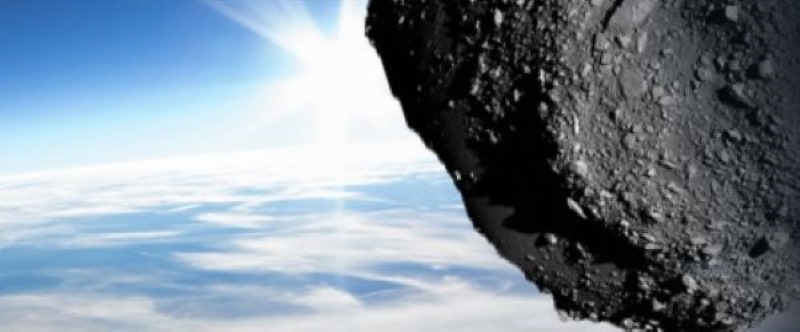
On February 27, 2023, astronomers discovered a new asteroid that they labeled 2023DW. For a couple weeks, the asteroid was a one on the Torino scale as an object that was probably unlikely to hit Earth but still merited more attention. But as of March 16, 2023, astronomers have now determined that 2023DW will almost certainly not hit Earth on Valentine’s Day, February 14, 2046. ESA’s Near-Earth Objects Coordination Center now lists the asteroid as having just 1-in-3,600 odds of impact. That’s a 99.972% chance that 2023DW will miss Earth. Its orbit is currently based on 112 observations spanning 17.776 days, through March 15, 2023.
EarthSky spoke with the inventor of the Torino scale, Richard Binzel of the Massachusetts Institute of Technology. He said that we should expect more objects to make the Torino scale as our technology improves, allowing us to see smaller objects we otherwise would have missed. So, we had better get used to seeing objects rated a one or more on the Torino scale, at least temporarily.
Earlier measurements
As a thought experiment in late February, Italian astronomer Piero Sicoli did his own math to figure out the odds of impact and the possible location of where the strike would be. He shared his results on Twitter:
#2023DW. With just 3 days of arc, I found about 1 in 400 chance of impact on Feb. 14, 2046 (JPL 1/770). Surely this possibility will soon be ruled out, however, as an exercise, I calculated where the asteroid might fall if this possibility occurred. pic.twitter.com/ldlSYJMvMz
— PS (@Piero_Sicoli) March 2, 2023
Last chance to get a moon phase calendar! Only a few left.
More on asteroid 2023DW
Astronomers estimate the asteroid is 165 feet (50 meters) in diameter. (Watch a video of size comparisons in asteroids.) While 50 meters isn’t anything near a planet-ending-sized rock, it would leave a mark in whatever region it hit, if it did strike.
In fact, the Chelyabinsk meteor – which exploded in the air over Russia in 2013 – was a little under half the size of the estimate for 2023DW.
2023DW no longer a 1 on the Torino scale
Originally, 2023DW had a Torino score of 1. That’s an exceedingly rare score. But even the very rare Torino score of 1 (instead of 0) is nothing to be worried about. A score of 1 means:
A routine discovery in which a pass near Earth is predicted that poses no unusual level of danger. Current calculations show a collision is extremely unlikely with no cause for public attention or public concern. New telescopic observations very likely will lead to reassignment to Level 0.
Binzel explained that it’s not unusual to see the numbers go up as we learn more about the object’s orbit. In these cases, we are just narrowing the line of uncertainty. The closer the asteroid will be to Earth, the more the numbers will go up until we eliminate its possibility of hitting Earth, at which case the asteroid will drop down to category zero.
This has been the case with 2023DW. It originally had around a 1-in-700 chance of hitting Earth, then at one point dropped as low as 1-in-360, before finally reaching the current 1-in-3,600.
More objects on the Torino scale in the future
Asteroid 2023DW provides a great opportunity for us to understand the Torino scale and how objects move on and off the list. We might as well get comfortable with asteroids temporarily at a Torino score of one or more, because they will become more common in the future, Binzel said. Why is that? It’s not because there are suddenly more of them, it’s because our increasing technology allows us to see these objects that we previously missed. Binzel said we could have up to a dozen objects at a time that are a non-zero on the Torino scale.
Future observatories, such as the Vera Rubin Telescope, the NEO Surveyor and NEOMIR, will be able to spot smaller objects. In fact, our increasing technology has already allowed us to start spotting more of these objects that actually have impacted Earth. As Binzel explained, objects like these are hitting Earth all the time, often over the ocean, we just didn’t know about them beforehand.
Just last month, Krisztián Sárneczky of Hungary discovered an asteroid just hours before it impacted over France, creating a brilliant light show and dropping small meteorites over the countryside. There was another recent case in Canada in November 2022, plus another in March 2022 over the Arctic, which was also discovered by Sárneczky!
So if you’re a fan of asteroids and meteors, the future is looking up.
Bottom line: Astronomers have now said the newly discovered asteroid 2023DW will most likely not hit Earth on Valentine’s Day 2046. In fact, there’s a 99.972% chance that 2023DW will miss Earth.











